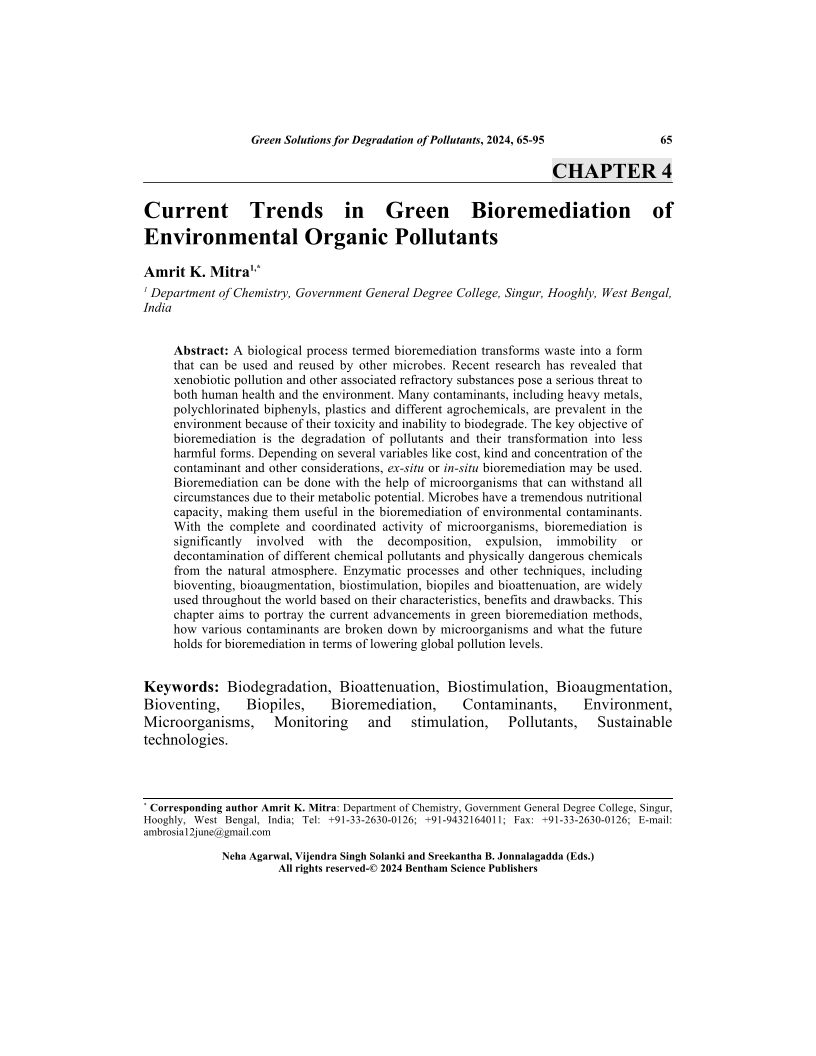Current Trends in Green Bioremediation of Environmental Organic Pollutants

- By Amrit K. Mitra1
-
View Affiliations Hide AffiliationsAffiliations: 1 Department of Chemistry, Government General Degree College, Singur, Hooghly, West Bengal, India
- Source: Green Solutions for Degradation of Pollutants , pp 65-95
- Publication Date: August 2024
- Language: English
Current Trends in Green Bioremediation of Environmental Organic Pollutants, Page 1 of 1
< Previous page | Next page > /docserver/preview/fulltext/9789815238969/chapter-4-1.gif
A biological process termed bioremediation transforms waste into a form that can be used and reused by other microbes. Recent research has revealed that xenobiotic pollution and other associated refractory substances pose a serious threat to both human health and the environment. Many contaminants, including heavy metals, polychlorinated biphenyls, plastics and different agrochemicals, are prevalent in the environment because of their toxicity and inability to biodegrade. The key objective of bioremediation is the degradation of pollutants and their transformation into less harmful forms. Depending on several variables like cost, kind and concentration of the contaminant and other considerations, ex-situ or in-situ bioremediation may be used. Bioremediation can be done with the help of microorganisms that can withstand all circumstances due to their metabolic potential. Microbes have a tremendous nutritional capacity, making them useful in the bioremediation of environmental contaminants. With the complete and coordinated activity of microorganisms, bioremediation is significantly involved with the decomposition, expulsion, immobility or decontamination of different chemical pollutants and physically dangerous chemicals from the natural atmosphere. Enzymatic processes and other techniques, including bioventing, bioaugmentation, biostimulation, biopiles and bioattenuation, are widely used throughout the world based on their characteristics, benefits and drawbacks. This chapter aims to portray the current advancements in green bioremediation methods, how various contaminants are broken down by microorganisms and what the future holds for bioremediation in terms of lowering global pollution levels.
-
From This Site
/content/books/9789815238969.chapter-4dcterms_subject,pub_keyword-contentType:Journal105

